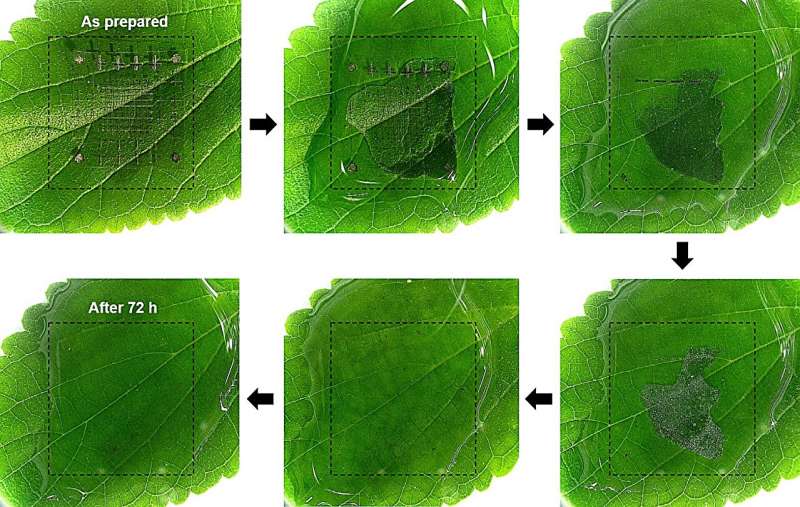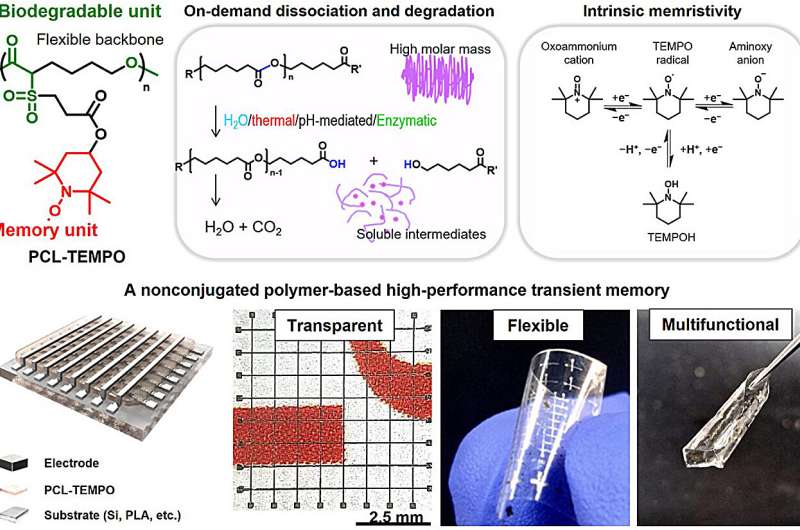
The use of electronics is increasing, especially with devices ranging from smartwatches to implantable health monitors and disposable gadgets. Unfortunately, many of these devices end up in landfills, contributing to the alarming issue of electronic waste (e-waste), which poses serious environmental risks.
A team from the Korea Institute of Science and Technology (KIST), led by Dr. Sangho Cho and Dr. Yongho Joo, has created a new type of memory device that not only offers high data storage capacity but also completely breaks down in water within just a few days. Their findings are detailed in an article published in the journal Angewandte Chemie International Edition.
This innovative material is safe for use in the human body and can break down predictably by tweaking the protective layer’s thickness and make-up. When this layer dissolves, the device disintegrates naturally in water within roughly three days, leaving no harmful remnants behind.
Previous attempts at creating water-soluble electronics often fell short in terms of data storage ability and resistance to mechanical stress. To overcome these issues, the KIST team engineered a new molecular design called PCL-TEMPO, combining a specific organic molecule that stores electrical data with polycaprolactone (PCL), a material that can decompose easily. This clever combination allows for effective data storage while ensuring the device can naturally degrade.

The memory device created from this material excelled in performance, clearly distinguishing between its ON and OFF states through over one million cycles. It preserved data reliably for more than 10,000 seconds and showed no decline in function even after more than 250 write-erase cycles or being bent 3,000 times. This level of durability and effectiveness is impressive for an organic electronic device.
This technology has potential far beyond conventional memory storage; it could revolutionize medical monitoring systems, create surgical implants that dissolve after use, and produce environmentally friendly data storage options as well as disposable military tools.
Particularly noteworthy is its ability to dissolve within the body without needing surgical removal, which can lessen discomfort and lower medical expenses for patients. Additionally, this development contributes to solving the growing e-waste problem and aids global initiatives aimed at achieving carbon neutrality.
“This is a groundbreaking development as it showcases the first instance of a high-performance organic memory device that can physically break down,” said Dr. Cho. “We hope to advance this into what we call an ‘intelligent transient electronic device’ through the addition of self-repair and light-responsive features, promoting the advancement of next-gen bioelectronics and eco-friendly tech.”
More information:
Jaehyoung Ko et al, A Biodegradable Radical Polymer Enables High‐Performance, Physically Transient Organic Memory, Angewandte Chemie International Edition (2025). DOI: 10.1002/anie.202422826
If you would like to see similar Tech posts like this, click here & share this article with your friends!

